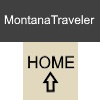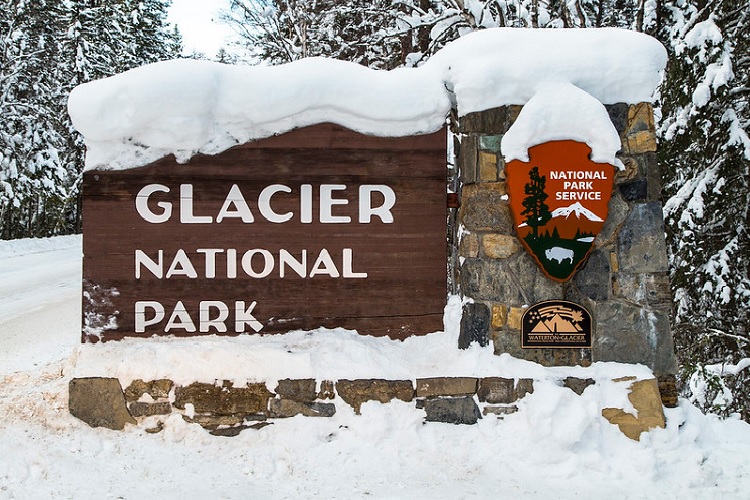
Glacier National Park is located in northwest Montana. Glacier is a vast wilderness region, a favorite place for hiking and viewing nature. The Park is famous for its spectacular scenery. High mountains, glaciers, alpine meadows, and pristine lakes make Glacier a special destination. Some people say Glacier is America’s most scenic park.
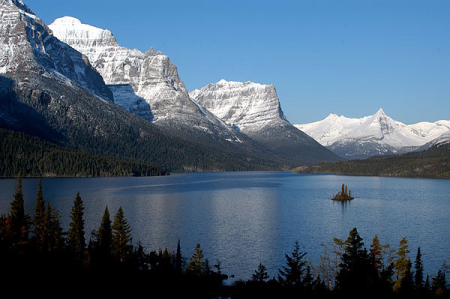 Saint Mary Lake and Wild Goose Island. Photo courtesy National Park Service.
Saint Mary Lake and Wild Goose Island. Photo courtesy National Park Service.
Glacier National Park covers a large geographic area. Measured in Google Earth, the distance across Glacier is about 35 miles east to west and about 60 miles north to south.
After the Ice Age ended, the mountains of northwest Montana, once blanketed by thick glacial ice, reemerged. Only this time, the mountains showed a new presence, so much more beautiful and grander than before. The glaciers sculpted the mountains in ways unimaginable. The land near mountain peaks was transformed by the development of new landforms. A unique glacial ecosystem was created.
In present day, 26 glaciers, defined as active ice masses larger than 25 acres, remain in the park. These glaciers formed about 7,000 years ago and are not a part of the massive alpine glaciers that existed during the Pleistocene period.
Most of the park’s glaciers are located in remote areas. To view them often takes great effort, hiking long distances in mountainous terrain. Sperry Glacier, Piegan Glacier, Grinnell Glacier, Sexton Glacier, and Agassiz Glacier are a few of the prominent glaciers in the park.
Jackson Glacier, five miles east of Logan Pass, and Salamander Glacier, near Many Glacier in the eastern part of the park, however, are easily viewed.
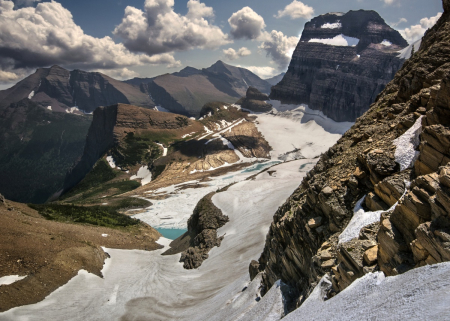 Grinnell Glacier and Salamander Glacier as seen off Highline Trail. Photo by Tim Raines, courtesy National Park Service
Grinnell Glacier and Salamander Glacier as seen off Highline Trail. Photo by Tim Raines, courtesy National Park Service

Active glaciers in Glacier National Park. Dotted line represents Going-to-the-Sun Road from the town of West Glacier at the west entrance to Glacier National Park to the village of St. Mary at the park’s east entrance. Map courtesy U.S. Geological Survey.
Mountains dominate the landscape in Glacier. Some of the highest peaks are Mount Cleveland at 10,479 feet; Mount Jackson at 10,057 feet; Mount Siyeh at 10,019 feet; and Mount Stimpson at 10,146 feet.
During summer months, flowering plants are abundant in mountain environments. This is true in Glacier as well. Visitors see purple asters, Indian Paintbrush, bear grass, glacier lilies, and many others.
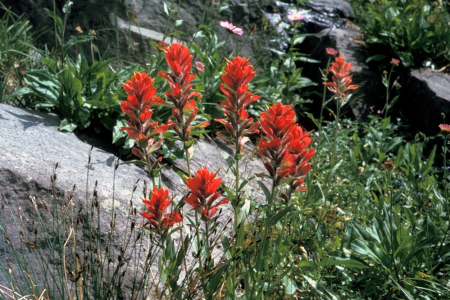 Indian paintbrush add much color to mountain slopes during summer months in Glacier National Park. Photo courtesy National Park Service.
Indian paintbrush add much color to mountain slopes during summer months in Glacier National Park. Photo courtesy National Park Service.
Glacier National Park also has magnificent forests, with abundant areas of aspen, western hemlock, western larch, and other species covering some 55% of the land. Among the many shrubs in the Park, the huckleberry is a favorite. Huckleberry plants produce an edible fruit much enjoyed for taste and nutrition by bears and humans alike.
Glacial lakes are another huge part of the landscape in Glacier National Park, 762 lakes by one estimate. In geologic time, glaciers were nature’s premier lake builders. Lake McDonald on the west side of the Park, and Saint Mary Lake on the east side of the park being two of the most prominent.
Numerous species of mammalian wildlife thrive in Glacier. Mountain lions, grizzly bears, black bears, bighorn sheep, lynx, elk, moose, and mountain goats make Glacier home. If you love smaller wildlife, sighting a beaver or pika is very rewarding.
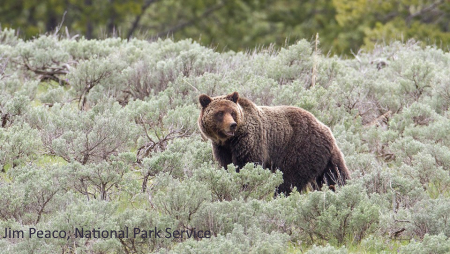 Many grizzly bears live in Glacier National Park. Photo courtesy National Park Service.
Many grizzly bears live in Glacier National Park. Photo courtesy National Park Service.
Golden and bald eagles soar in the sky over valleys and meadows. Osprey search for fish in alpine lakes. Eerie calls of the common loon are frequently heard by visitors. Lake trout, rainbow trout, brook trout, and other fishes, live in the park’s many lakes. Nature reins in Glacier.
As for activities, Glacier is a hiker’s paradise beyond that any person could conquer in a lifetime. Glacier boasts more than 700 miles of trails. Some of the trails are arduous to hike, while others accommodate folks less capable. Nature photography, camping, bicycling, fishing, and boating offer great fun and pleasure for many visitors.
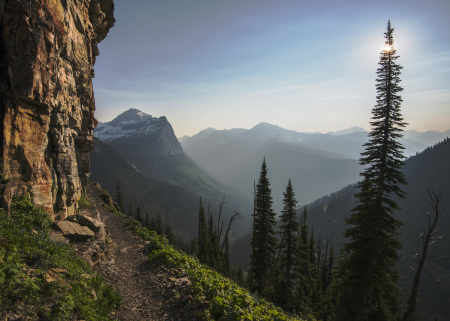 Highline Trail, Glacier National Park, Photo courtesy U.S. Department of the Interior.
Highline Trail, Glacier National Park, Photo courtesy U.S. Department of the Interior.
Glacier National Park has two main entrances, one near the village of West Glacier on the west side of the park and another near the village of Saint Mary on the east side of the park.
Going-to-the-Sun Road connects the village of West Glacier with the village of St. Mary. If driving, the distance is about 53 miles, every mile travelled as scenic as the mile past. It’s a trip of about two or two and one-half hours assuming ideal travel conditions, says the National Park Service.
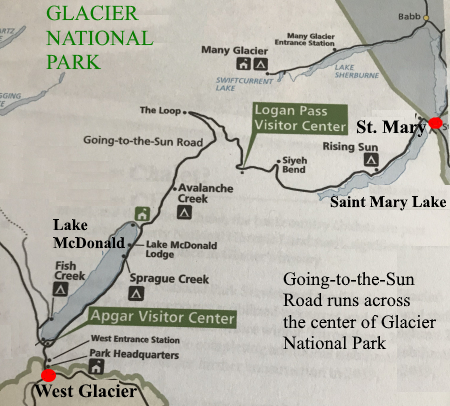
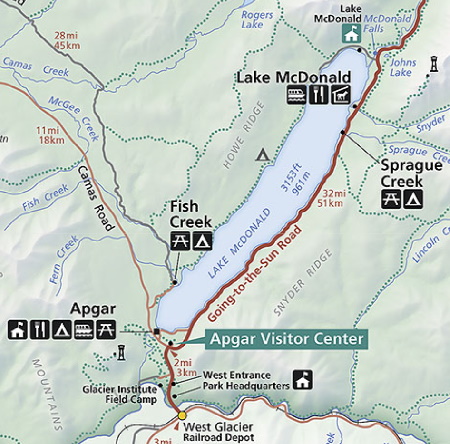
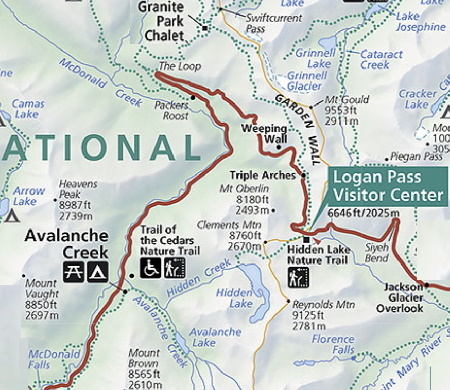
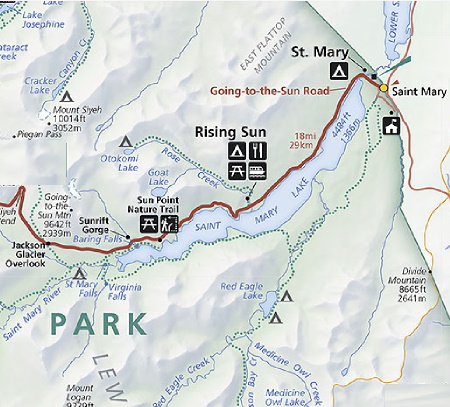
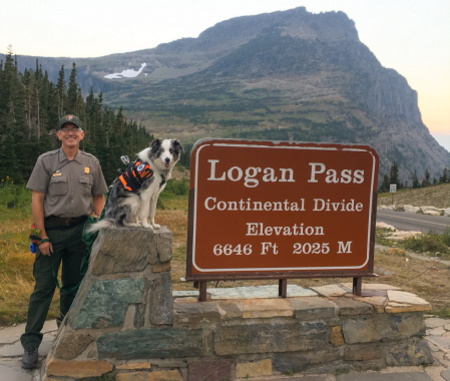 Greetings from Logan Pass in Glacier National Park. Two happy campers, national park ranger and his dog. Photo courtesy National Park Service.
Greetings from Logan Pass in Glacier National Park. Two happy campers, national park ranger and his dog. Photo courtesy National Park Service.
Glacier has three more entrances on the east side of the park, off U.S. Highway 89: Two Medicine Entrance, Many Glacier Entrance, and Cut Bank Entrance. These entrances go into the park for only a few miles taking visitors to particular attractions. For each route, visitors leave the park on the same road on which they entered.
Two more entrances, Camas Creek Entrance and Polebridge Entrance, both very remote, are on the the west side of the park. Both are used mainly by more hardy travelers. Read more about all entrances at Smoky Bear Ranch.
If you’d like a convenient and comfortable way to travel inside Glacier National Park, free Shuttle Buses and Red Buses (for a fee) are a great way to go. Glacier Sun Tours offers guided bus tours.
Lodging inside Glacier National Park s limited, so early booking may be the only chance to stay in Glacier. Five great choices, all inside the park:
- Lake McDonald Lodge (west side of the park);
- Apgar Village Lodge and Cabins (west side of the park);
- Many Glacier Hotel (east side of the park);
- Rising Sun Motor Inn and Cabins (east side of the park);
- Swiftcurrent Motor Inn and Cabins (east side of the park).
Glacier National Park Lodges handles reservations. The historic Glacier Park Lodge outside of the park on the east side in the village of East Glacier is another top place to stay.
The three iconic, historic, lodges, Lake McDonald Lodge, Many Glacier Hotel, and Glacier Park Lodge, inside or near the park, are stunning and spectacular. These lodges were built in another era, around 1913, about the same time Glacier National Park was established. The Great Northern Railway and an independent developer wanted to wow travelers. So they built massive timber lodges to accommodate. Today, all three lodges still welcome visitors and are a national treasure.
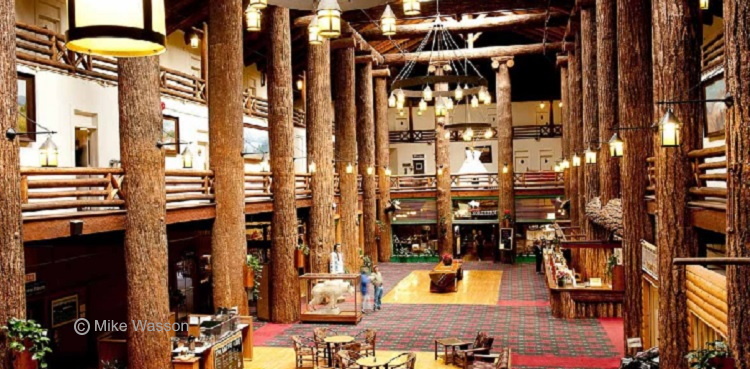
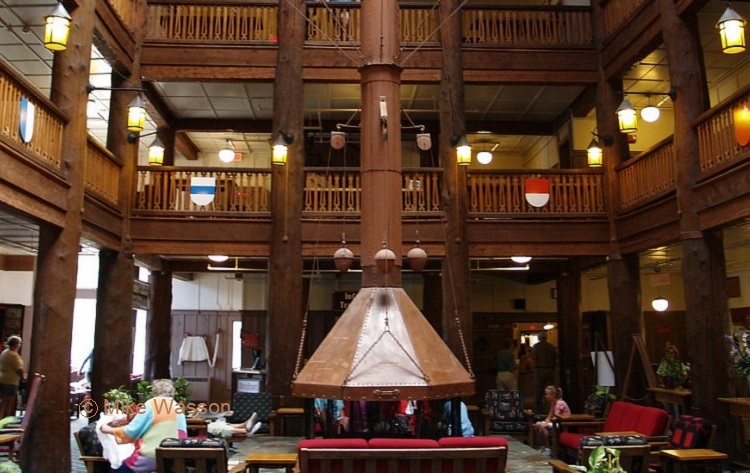
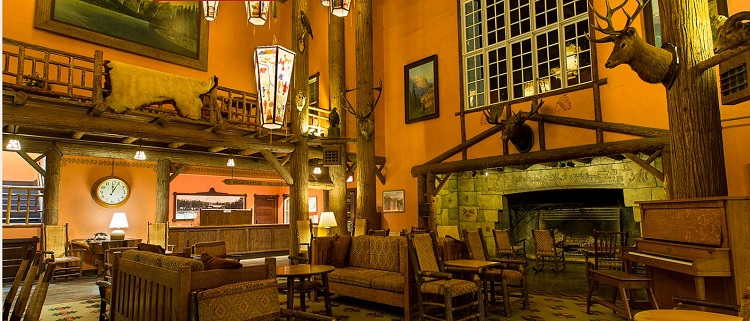
Campgrounds are a good option for some visitors in Glacier. The park has eight Class A and five Class B campgrounds, plus 65 backcountry campgrounds.
The entrance fee for Glacier is $35.00 per private non-commercial vehicle, 7-day pass, for the 2019 season. Still a bargain.
Glacier National Park is part of a huge wilderness region that covers much of northwest Montana. As such, there are other options besides Glacier National Park to find enjoyment in the outdoors in areas west and south of the national park.
Glacier National Park is far from major urban centers in the United States. Even from Montana’s major cities, Glacier may be a long distance away; however, a relatively short route to Glacier begins from Kalispell. A trip to Glacier is an experience of a lifetime. Go if you can!
Mileage to Glacier and Yellowstone:
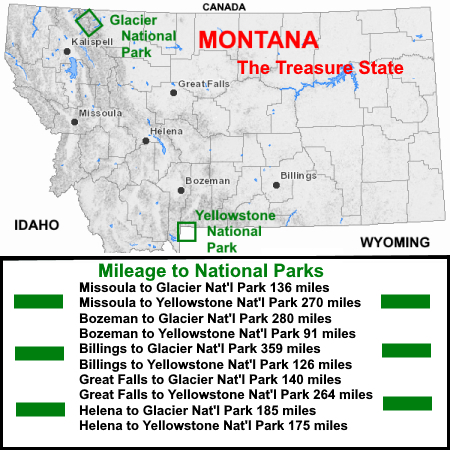 Mileage from major Montana cities to Glacier and Yellowstone Nat’l Parks. For each city mileage is computed to the closest park entrance. Glacier National Park entrances are at West Glacier and East Glacier. Yellowstone National Park entrances are at West Yellowstone and Cooke City. Kalispell, not shown in the mileage table, is on the front door step of Glacier.
Mileage from major Montana cities to Glacier and Yellowstone Nat’l Parks. For each city mileage is computed to the closest park entrance. Glacier National Park entrances are at West Glacier and East Glacier. Yellowstone National Park entrances are at West Yellowstone and Cooke City. Kalispell, not shown in the mileage table, is on the front door step of Glacier.
Travel Safety:

Wild animals are dangerous. Visitors should always keep a safe distance. Park administration officials say to stay at least 75 feet (25 yards/23 Meters) away from deer, mountain goats, elk, bighorn sheep, moose, and coyotes. Stay at least 300 feet (100 yards/91.4 meters) away from grizzly bears, black bears, and wolves. Never feed wild animals. Never approach wild animals. The safest way to view wild animals is from inside a car.
Travel tip:
U.S Highway 2 runs along the southern boundary of Glacier National Park. Driving this section of the highway, travelers cross Marias Pass (the Continental Divide) at 5,213 feet, a relatively low elevation. This stretch of road is open year-round, and a good route to take when crossing the northern Rocky Mountains in Montana. For tourists traveling eastbound from Kalispell and the town of West Glacier on Going-to-the-Sun Road in Glacier National Park, U.S. Highway 2 may be a good route to take to get back to Kalispell and the Flathead Valley. If your drive in the park starts from the village of Saint Mary and goes westbound on Going-to-the-Sun Road, U.S. Highway 2 is a good route to take back toward the east side of the park.
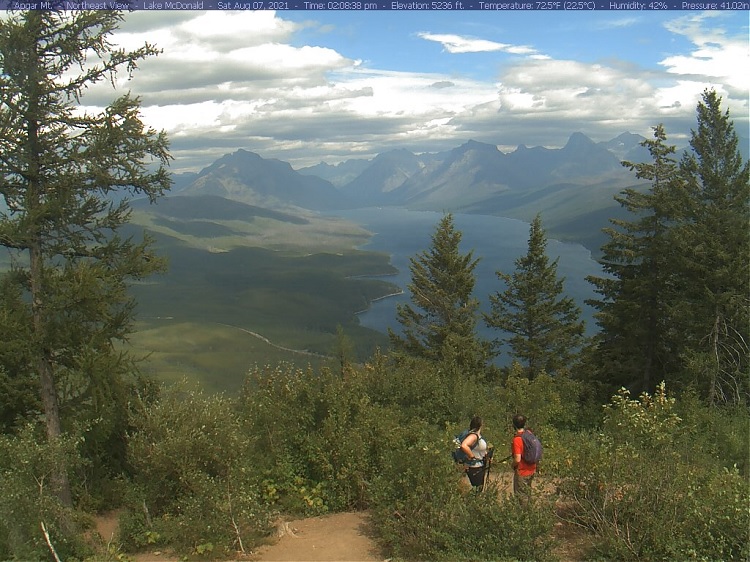
Glacier as Wilderness
According to the National Park Service, over 90% of Glacier National Park is managed as wilderness, much in the same way as other lands in National Wilderness Preservation System are managed.
In 1964, the U.S. Congress established the National Wilderness Preservation System. The law, know as the Wilderness Act, states the system is “to be composed of federally owned areas designated by Congress as “wilderness areas”, and these shall be administered for the use and enjoyment of the American people in such manner as will leave them unimpaired for future use and enjoyment as wilderness, and so as to provide for the protection of these areas, the preservation of their wilderness character, and for the gathering and dissemination of information regarding their use and enjoyment as wilderness.”
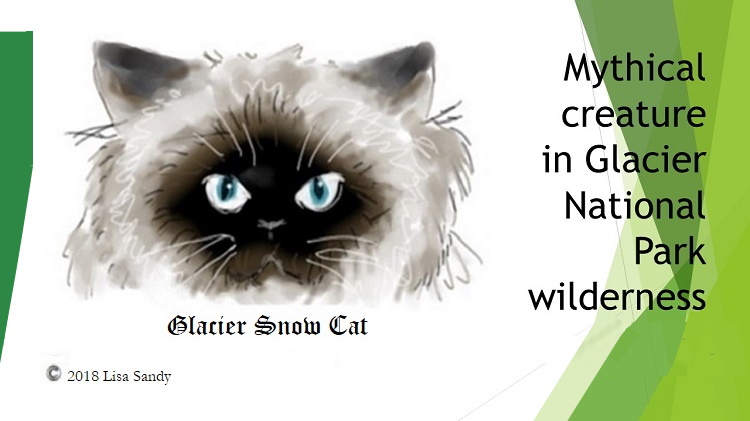
In the Wilderness Act, wilderness is defined in part as “an area where the earth and its community of life are untrammeled by man, where man himself is a visitor who does not remain.”
Congress has not acted to officially include Glacier National Park as a part of the National Wilderness Preservation System.
Travel notices
Glacier National Park requires “ticketed entry” for travel on Going-to-the-Sun Road between the park’s west entrance near West Glacier and the east entrance near St. Mary from May 28 to September 6, 2021. This is an online reservation system. Road status in Glacier National Park.
Going-to-the-Sun Road is the highway that runs across (east-west) Glacier National Park. Due to the snowy and cold climate of this region and elevation of the road, Going-to-the-Sun Road was open its full length, 50 miles, for only two months in 2022.
Enjoy Glacier National Park (Spanish: Parque Nacional Los Glaciares).
| Montana Traveler: Survey Results on Sept. 12, 2021. Survey is OPEN | |
|---|---|
| What do you like most about Glacier National Park? | Percentage of total responses |
| Watching wildlife | 13% |
| Viewing mountains and lakes | 62% |
| hiking on trails | 25% |
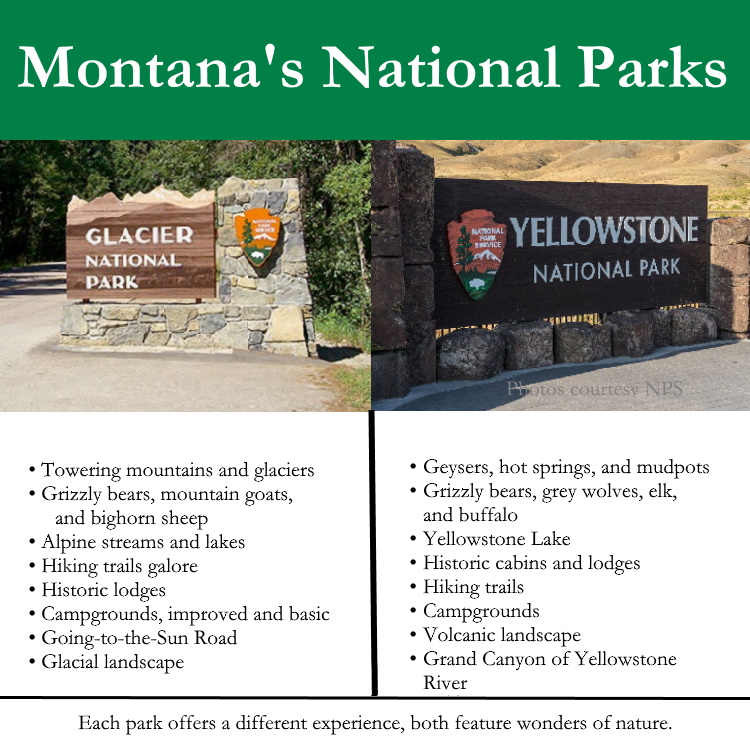
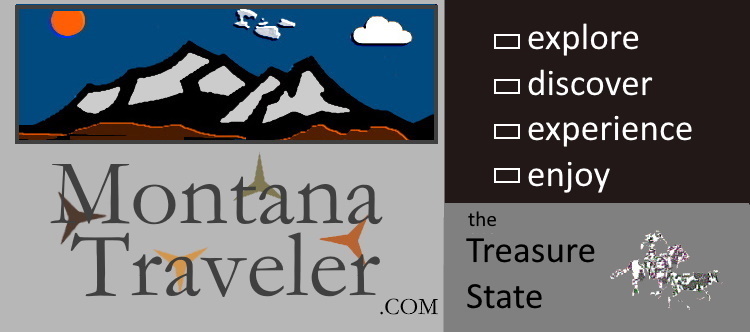
Absaroka Mountain, Mont.
© 2022 John Sandy
